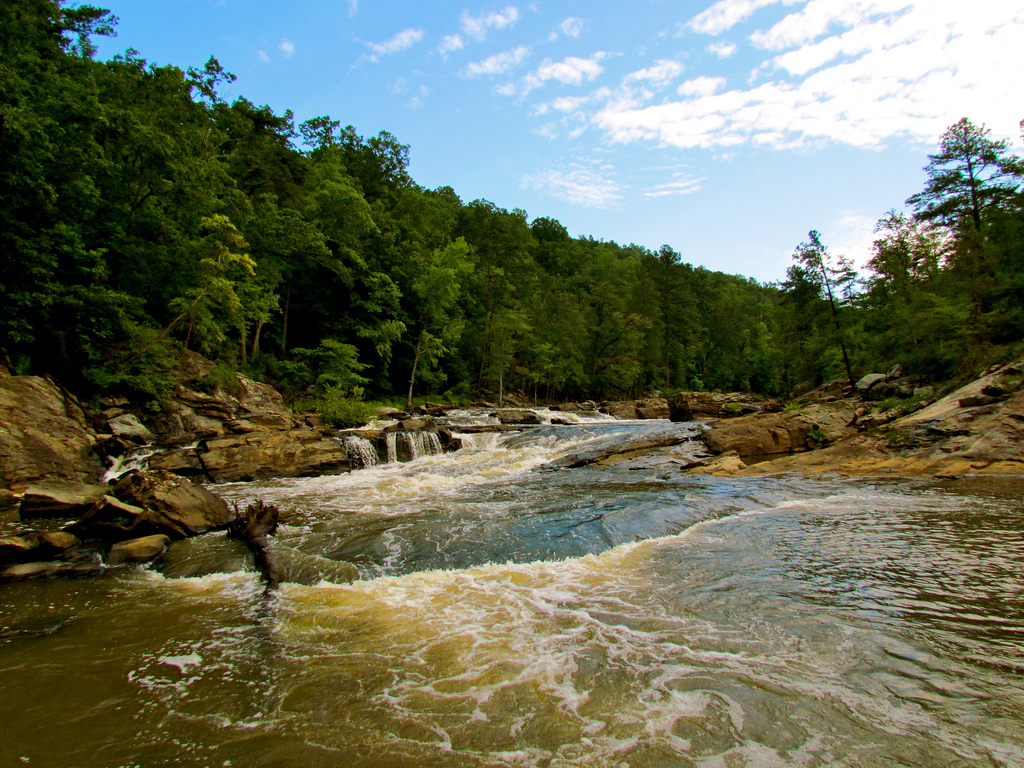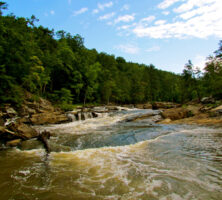The Georgia Conservancy is a statewide environmental organization working to ensure that present and future generations of Georgians have healthy air, clean water, unspoiled wild places, and community greenspace. The Conservancy’s tools include advocacy and education (both traditional environmental education and community outreach). It researches and monitors issues, disseminates information, and works with businesses, governments, and nonprofit organizations to find solutions by building consensus.

Photograph by Jeff Gunn
The Georgia Conservancy was founded in 1967 after a former U.S. congressman from Decatur, James Mackay, convened a group of concerned citizens to discuss Georgia’s vanishing resources. The earliest work of the organization focused on protecting threatened places. Working in partnership with other organizations, the Conservancy won some early victories when Sweetwater Creek and Panola Mountain in metro Atlanta became state parks, Cumberland Island became a national seashore, and the Okefenokee Swamp was designated as Wilderness.
The Georgia Conservancy focuses on more than environmentally sensitive places. Early on, the group expanded its efforts to include advocacy for clean water and clean air. It worked in the Georgia General Assembly to pass the Metropolitan River Protection Act, which was aimed at increasing protections for the Chattahoochee River, and successfully opposed the construction of a dam on the Flint River at Sprewell Bluff near Thomaston. As early as 1971 the Conservancy’s executive committee called for investment in rapid transit in metro Atlanta because of the link between automobile emissions and air pollution.
Because of the connections among land use, quality of life, and environmental protection, by the mid-1990s the Georgia Conservancy began to emerge as a leader in the “smart growth” movement. The Conservancy’s Blueprints for Successful Communities program has gained a national reputation for bringing diverse constituencies together to develop and implement thoughtful solutions to combat sprawl. To date, more than twelve communities in metro Atlanta and around Georgia have developed plans for a more sustainable future through the expertise of the Georgia Conservancy. Currently the program is focusing on the implementation of watershed-based plans along the middle Chattahoochee near Columbus, the revitalization of the Ocmulgee River corridor in downtown Macon, and the continued survival of the unique coastal community of Sandfly near Savannah.
The Georgia Conservancy continues to work for sustainable policies for air, water, and natural areas. The organization supported the creation of the Georgia Community Greenspace Program and is currently calling for a statewide vision for protecting natural areas in the state. The group works with transportation planners and state air-quality officials to restore and maintain air quality and thus protect public health and the natural environment throughout the state. It is represented on the board of the Georgia Regional Transportation Authority (GRTA) and works cooperatively with GRTA and other groups to propose alternatives and to comment on proposed regulatory strategies as an advocate for air quality and public health concerns. The Conservancy has urged state and local leaders to take steps to conserve water and has opposed efforts to build reservoirs until the state better understands their full impact. As part of the Georgia Water Coalition, the Conservancy is working to ensure that water continues to be a public resource, managed by the state for the good of all.
The Georgia Conservancy also offers a variety of environmental education programs. Annually it holds the Youth Environmental Symposium to honor middle and high school environmental projects. “Native Seasons,” developed by the Conservancy, is the only environmental education curriculum offered in Georgia that is specific to the state. It focuses on how plants and animals adapt to the changes of season. Educators who participate in Conservancy workshops receive the curriculum and tips on how to use it with their students. Children’s programs are also available.
Georgia Conservancy members take part in educational programs, conferences, and symposia and enjoy travel to some of Georgia’s most interesting places. They receive a bimonthly newsletter and have opportunities to participate in the Conservancy’s advocacy work.





